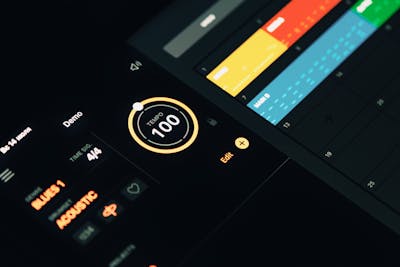In the ever-evolving world of smartphones, two giants consistently stand out: Apple’s iPhone and Google’s Pixel series. The latest models, the iPhone 15 and the Google Pixel 8, have both garnered significant attention. This blog post delves into a detailed comparison of these two flagship devices, examining their design, performance, camera capabilities, software, and overall user experience.
Design and Build Quality
iPhone 15: Apple has always been synonymous with premium design, and the iPhone 15 is no exception. It features a sleek, minimalist design with a ceramic shield front cover and aerospace-grade aluminum edges. The device is slightly lighter than its predecessor, weighing 171 grams, and measures 147.6 x 71.6 x 7.8 mm. The iPhone 15 also introduces the Dynamic Island, a unique feature that enhances multitasking by transforming the notch into an interactive element.
Google Pixel 8: The Pixel 8, on the other hand, maintains Google’s signature design language with a more pronounced camera bump and a matte finish. It is slightly heavier at 187 grams and measures 150.5 x 70.8 x 8.9 mm. The Pixel 8’s design is functional, with a focus on durability and ease of use. It also boasts a 6.2-inch OLED display with a 120Hz refresh rate, offering smoother visuals compared to the iPhone 15’s 60Hz display.
Performance and Hardware
iPhone 15: Under the hood, the iPhone 15 is powered by Apple’s A16 Bionic chip, which promises exceptional performance and efficiency. With 6GB of RAM and storage options ranging from 128GB to 512GB, the iPhone 15 is designed to handle intensive tasks with ease. The battery life is also impressive, thanks to the optimized power consumption of the A16 chip.
Google Pixel 8: The Pixel 8 is equipped with Google’s Tensor G3 processor, paired with 8GB of RAM and storage options of 128GB and 256GB. While the Tensor G3 is a powerful chip, it doesn’t quite match the raw performance of the A16 Bionic. However, the Pixel 8 excels in AI-driven tasks, leveraging Google’s advancements in machine learning and artificial intelligence.
Camera Capabilities
iPhone 15: Apple’s iPhones have long been praised for their camera quality, and the iPhone 15 continues this tradition. It features a dual-camera setup with a 48MP main sensor and a 12MP ultra-wide sensor. The iPhone 15’s camera system excels in various lighting conditions, offering sharp, vibrant images. The new Photonic Engine enhances low-light photography, making night shots clearer and more detailed.
Google Pixel 8: The Pixel series is renowned for its camera prowess, and the Pixel 8 is no different. It sports a 50MP main sensor and a 12MP ultra-wide sensor. Google’s computational photography algorithms work wonders, producing stunning images with excellent dynamic range and color accuracy. The Pixel 8 also introduces new AI-driven camera features, such as Magic Eraser and Real Tone, which enhance photo editing and representation.
Software and User Experience
iPhone 15: Running on iOS 17, the iPhone 15 offers a seamless and intuitive user experience. Apple’s ecosystem is tightly integrated, providing a cohesive experience across devices. Features like Face ID, Apple Pay, and the App Store’s extensive library contribute to the iPhone’s appeal. The iPhone 15 also benefits from regular software updates, ensuring security and access to the latest features.
Google Pixel 8: The Pixel 8 runs on Android 14, with Google’s clean and user-friendly interface. One of the standout features of the Pixel series is the timely software updates, often receiving new Android versions and security patches before other devices. The Pixel 8 also leverages Google’s AI capabilities, offering features like Call Screen, Hold for Me, and Assistant Voice Typing, which enhance the overall user experience.
Battery Life and Charging
iPhone 15: The iPhone 15 is equipped with a 3,349mAh battery, which, combined with the efficiency of the A16 Bionic chip, provides excellent battery life. Users can expect a full day of usage on a single charge. The iPhone 15 also supports MagSafe and fast charging, allowing for convenient and quick power top-ups.
Google Pixel 8: The Pixel 8 features a larger 4,575mAh battery, offering slightly better battery life than the iPhone 15. It supports fast charging and wireless charging, ensuring that users can quickly recharge their devices. The adaptive battery feature in Android 14 further optimizes power consumption based on usage patterns.
Conclusion
Both the iPhone 15 and Google Pixel 8 are exceptional devices, each with its own strengths. The iPhone 15 excels in performance, build quality, and integration within Apple’s ecosystem. On the other hand, the Pixel 8 shines in camera capabilities, AI-driven features, and battery life. Ultimately, the choice between these two flagship phones comes down to personal preference and ecosystem loyalty. Whether you prefer the seamless experience of iOS or the flexibility and innovation of Android, both devices offer top-notch features that cater to a wide range of users.


